Grandinote Shinai Class-A integrated amplifier
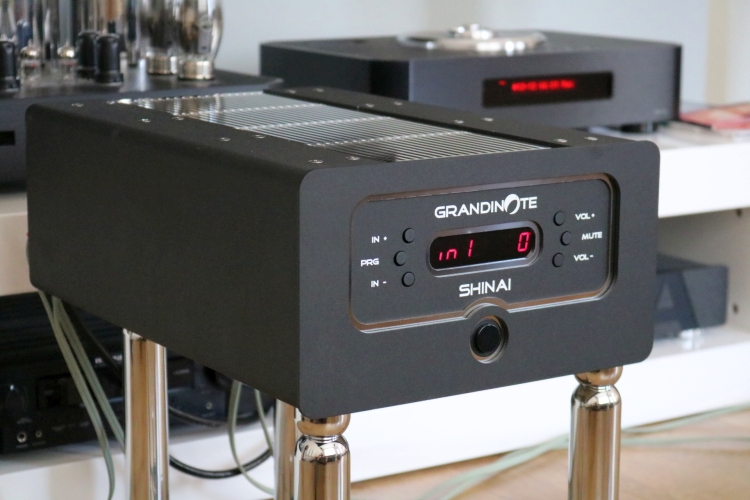
Review samples supplied by Colab
Retail price in the Benelux including 21% VAT:
Shinai Integrated amp: 11.400 euro
Stand-Combo: 1.500 euro
Magnetosolid
There are only two basic types of amplifiers: tube amplifiers, and solid-state amplifiers. But Grandinote has set out to combine aspects from both in their products. They do this using what they call the Magnetosolid principle. So, what does this entail? The exact definition remains something of a trade secret, but apparently, tube amplifier schematics are used without using tubes. What is unveiled is that the Shinai uses output transformers like in a tube design but with some changes specific to the Grandinote study.
The term Magnetosolid is the union of Magneto and Solid. Magneto is for ferromagnetic components, referring to the output transformers while Solid is for solid-state components, as in the transistor output devices. Further, it’s mentioned that the output transformers are a consequence of the tube schematics and that the products employ Direct-Coupling stages, meaning that no capacitors are used in the signal path. While the latter statement might be true for the Shinai integrated amplifier, it does not apply to the Volta and Celio source products that both have inline capacitors, again, much like tube products tend to do.
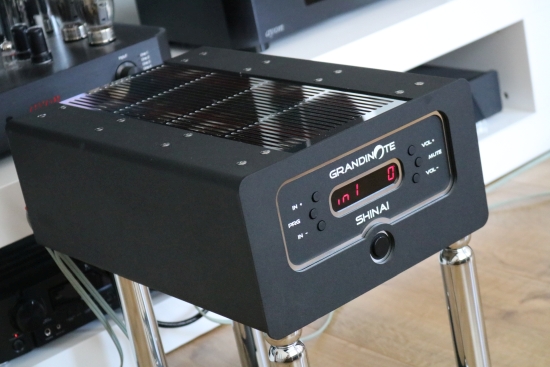
Shinai
The Shinai integrated amplifier uses only two output transistors per channel in a simple push-pull configuration and in a true dual-mono setup to deliver 37 Watts in pure Class-A (speaker impedance not mentioned). Not only are the channels 100% separated (two heat sinks in the middle with the gain stages on the left and right sides and finally the power supplies on the outer sides), the amp actually requires two separate power cables!
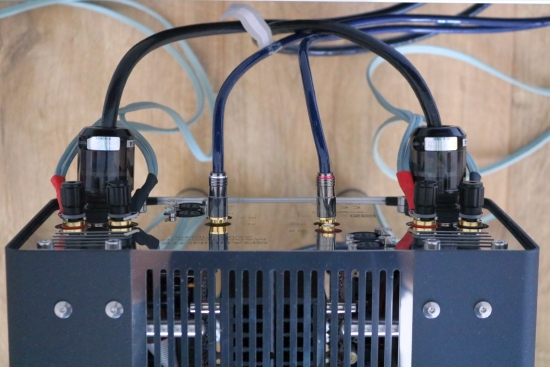
According to the specifications, the Shinai employs no feedback but as far as I know, a transistor cannot work without some form of feedback, so I figured that what was meant is that the amp employs no global feedback. Upon checking with the manufacturer, designer Massimiliano Magri responded, (slightly paraphrased):
“Feedback is part of the output signal that returns to the input. The Grandinote products have no output signal returned to the input, not locally, not partially. Really my friends, Grandinote products are TOTALLY feedback-less!!!!.”
That’s certainly interesting.
It’s also indicated that the amp has no capacitance between the stages (but does so prior to the output transistors) and that it has a very low output impedance, resulting in “a very high damping factor”. The specs indicate that the Shinai has a damping factor of over 150. Now, while that doesn’t appear to be very high in light of values of 1000 that you typically see for Class-D amplifiers, I should note that, depending on the design, relatively low damping factors can still yield superb bass control. Moreover, one can question whether such extreme values actually result in the best or most beautiful sound. In any event, according to the manufacturer, the Shinai “should have the kind of bass control that tubes can only dream of”. It’s a bold statement but one that I would later actually find to be true.
At 40kgs and with a relatively compact size of 318 mm wide x 196 tall x 473 mm deep, the amplifier feels extremely solid and is so heavy that it is best handled by two persons. The amp offers two RCA inputs and two XLR inputs and that’s it, nice and simple. All the connectors feel comfortingly robust.
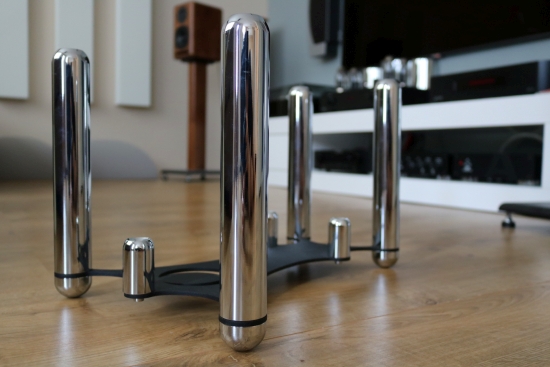
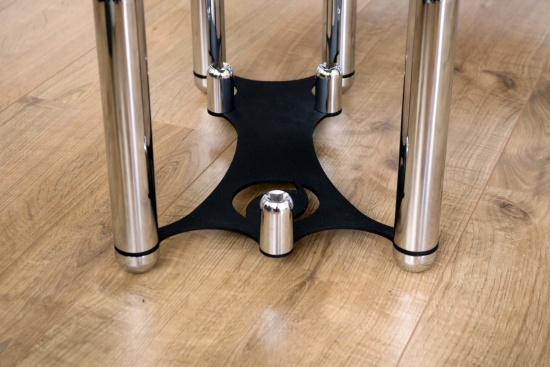
Combo Stand
The Combo stand is custom-made for the Grandinote stereo integrated amplifier or stereo power amps, together with a Volta or Celio source component. There are various other Stand options that cater to the preamp or a preamp combination, and for the mono power amps, and some of them are available in two different heights. The Stand-Combo that I used for this review is available only in a 272mm height. Since the stand has been designed specifically for this amplifier, I started my listening as intended, with the Shinai amp on top, its rounded feet perfectly fitting the pillars’ dimples, and the Celio in the rack’s lower position, just for the looks.
As it would turn out, the Combo stand greatly affects how the amp sounds. I will describe all this in great detail and in a stepped approach. Therefore, please make sure to read the entire review prior to forming an opinion.
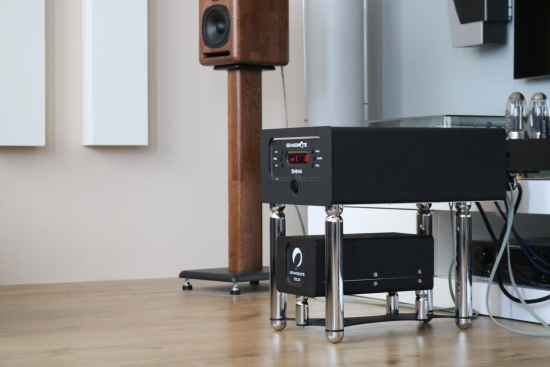
Xavian system
To start off this review, I will listen to the Shinai amplifier in my Secondary System. Connected with two Belden 19364 cables with Bals Schukos and Oyaide C-004 IEC connectors, a Siltech Paris cinch interlink, and van den Hul Skyline Hybrid speaker cables, the amp was mounted on the Combo Stand.
It goes without saying that audio products need warm-up time. Some more than others, but it’s rarely not a factor. The Shinai is no different, but in order to relay the full experience, I will describe how it sounds cold or warm and on its Combo Stand or on the Artesania Modular Floor platform.
Upon the first switch-on and granted no warmup, the Shinai rewarded with the big, lush, and rich sound and with the immediate musical appeal that one typically expects from a Class-A amplifier. In the context of this system and placed on the Combo Stand, the bass is of the rich and saturated and slightly mellow kind but rather than being slow or lacking impact, the music is reproduced in an involving and upbeat manner with truly excellent pacing and remarkably great dynamics.
During the first few tracks, while the amp was still warming up, it had a full and rich tonality, but there was also a slight dryness and hardness in the treble, reminiscent of how typical transistor amplifiers can negatively affect the sound. At this point, in a strange association that I wouldn’t understand until later, in a way, the Shinai reminded me of the early Class A Krell amplifiers, but with a decidedly richer delivery and a more organic feel. Even so, and even without any optimizations in terms of cables or otherwise, the amp made me relax and enjoy the ride and that’s always a good sign!
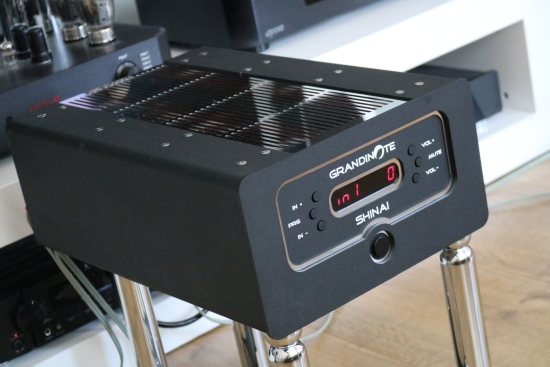
During what was probably the sixth track, I noticed how the treble had lost any trace of hardness and had become fluid. Not only that, the entire frequency range now manifested in a uniform manner, with an utterly free-flowing, supremely liquid presentation and a soundstage that filled the entire room. There was most definitely something to this alluring delivery that literally made me surrender to the music as it washed over me.
At this point, the aforementioned link with Krell was shattered and made room for another association. Now, the Shinai more resembled the Jadis sound as I know it from the JP80 and JA30 pre/power combo: big, lush, and smooth. But the Shinai added to this with more grip and better and more varied pacing to make for a delivery that is not only highly natural and non-electronic but also well-detailed, open, and exciting. Somehow, the Shinai is just as supremely liquid as it is energetic and gripping. What’s more, it’s not only dynamic and expressive, it has the kind of breathing, unrestrained, and varied dynamics, as opposed to the steadily loud presentation that many transistor amplifiers have. This is a very important factor in making the music sound realistic and involving.
Although it sounded great from a cold start, I’d say that the amp really came on song after about 45 minutes. Pierre Costers of Colab confirms that he usually allows the amp to warm up for 30 minutes prior to any listening and a warm-up of 1 hour for serious listening.
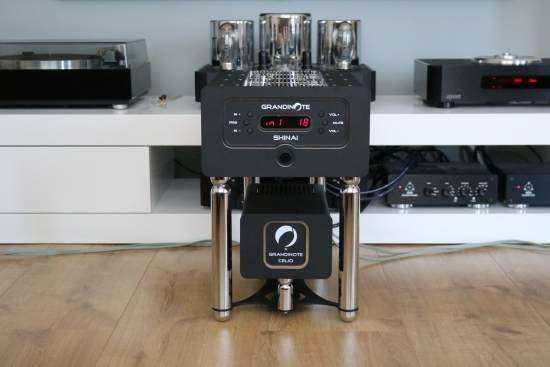
Counter-intuitively, the Ayon Spirit III KT-150 tube amplifier actually sounds comparatively drier, darker, less liquid, and free-flowing than the Sinai. I’ll let that sink in… But I will note that the Ayon does have an unusually non-tube-like sound. In fact, it has a more ballsy and concentrated delivery than many transistor amplifiers, the Shinai included. As regular readers know, I’ve always admired the Ayon for its solid sound and especially its remarkable bass. It has a toe-tapping and highly rhythmic delivery that works particularly well with 80’s soul, hip-hop, and other electronic music without ever highlighting the treble. But even though I love the Ayon’s slam, there’s an inescapable allure to the Shinai’s glorious and effortlessly continuous delivery. I won’t say that the Ayon prevents an emotional connection but it certainly comes easier with the Shinai. And I have yet to find a style that it does not reproduce with verve.
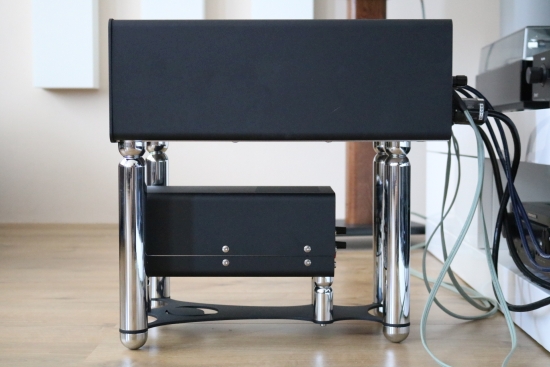
Note: the source component on the Combo Stand’s lower level will be reviewed separately
Compared to the Ayon and contrary to that amp, the Shinai’s bass does have that slight bloom and roundness that I have come to associate with transformer-coupled outputs and whether or not the Shinai employs these, that’s one aspect in which the amp mimics tube sound. In line with those expectations, the Shinai’s bass is not of the chiseled-from-granite kind as it can be with some transistor amplifiers. But as I mentioned, the amp is absolutely not slow, and most certainly not blurry. Then, there are the glorious midrange, the flow, and the effortless soundstaging for which tube products are typically praised and which strangely make the Ayon sound a little sober, and, in a way, more like a transistor amp than the Shinai that actually is a transistor amp. This just goes to show that it’s dangerous to make generalizations with respect to amplification techniques and audio equipment.
Even though the Shinai offers a nice dose of bloom and gentle warmth, importantly, there’s absolutely no excess of warmth and also no “saddle” effect, in which the midrange is structurally dialed back compared to the bass and treble. Principally, the amp just sounds linear, and it adapts to the music. When playing Toni Braxton or Anita Baker, the Shinai delivers the music with what seems like a subtle golden glow but as soon as you play something spicy like Robert Palmer’s You Are In My System, or basically, anything produced by Michael Frank, the amp immediately flexes its muscles, throws out any idea of sugar-coating and slaps me right in the face with its immediate dynamics! It may sound as if I am being overly dramatic, but really, I am not exaggerating. Whenever I play something spicy, it comes out as such, totally unrestrained.
It’s the seemingly impossible: a very neutral and linear amplifier that is fast, expressive, and dynamic but equally lush, liquid, and seductive, but this is exactly what the Shinai + Combo Stand achieves.
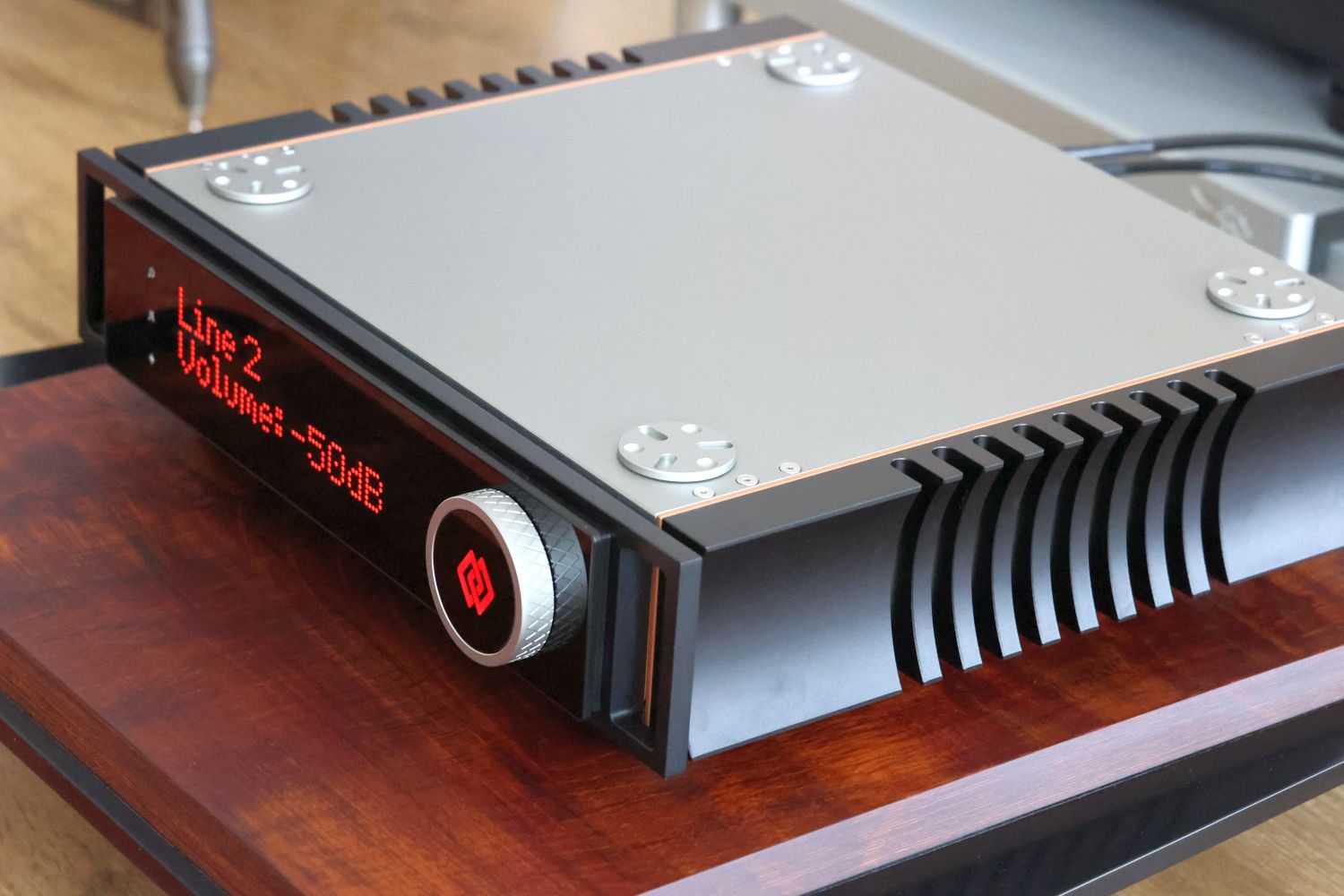
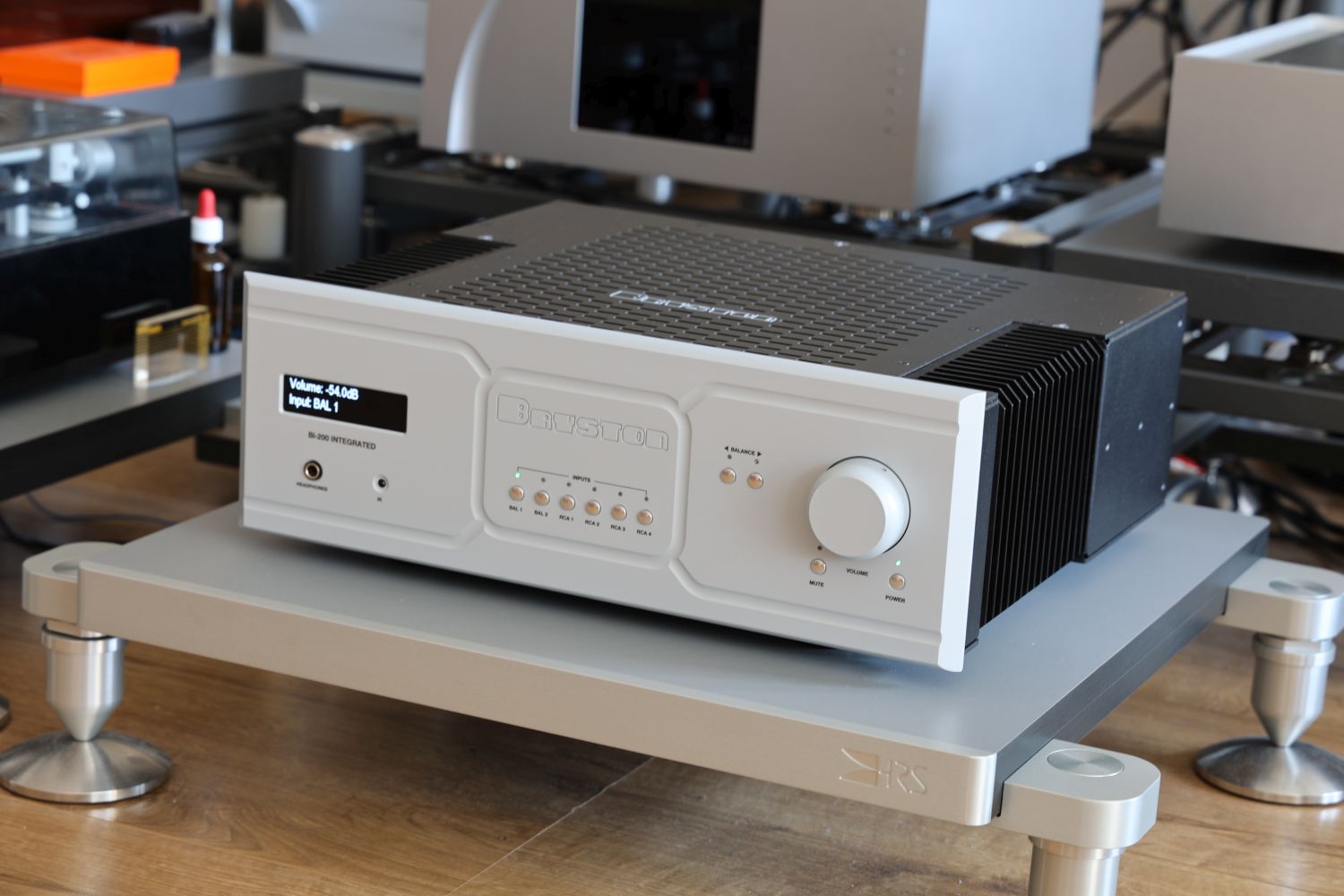
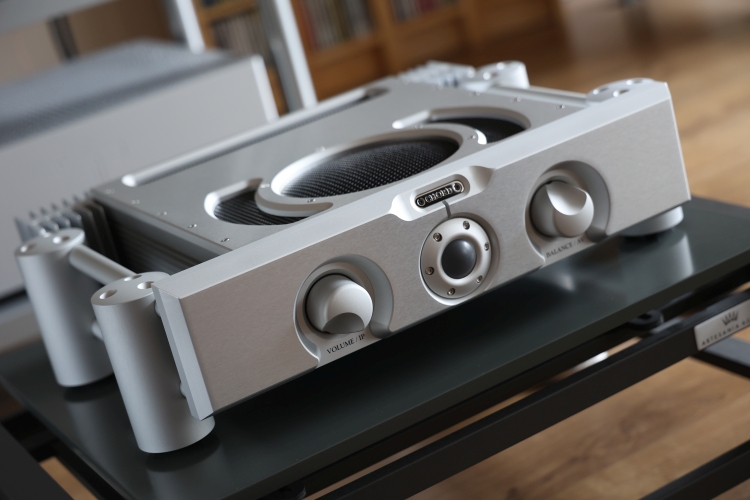
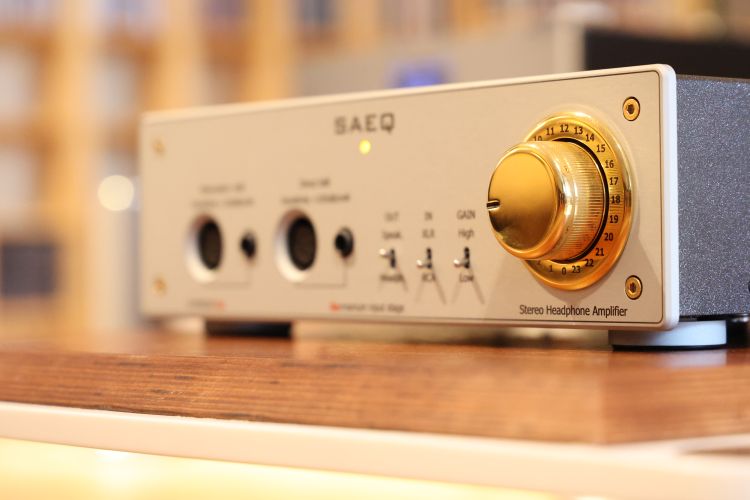
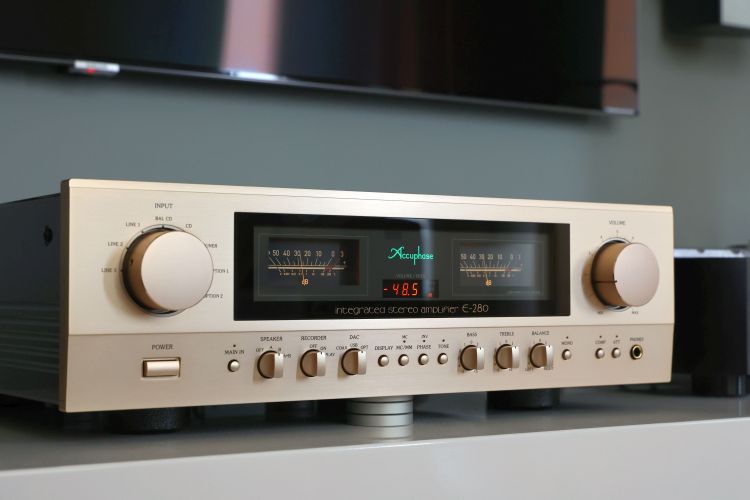
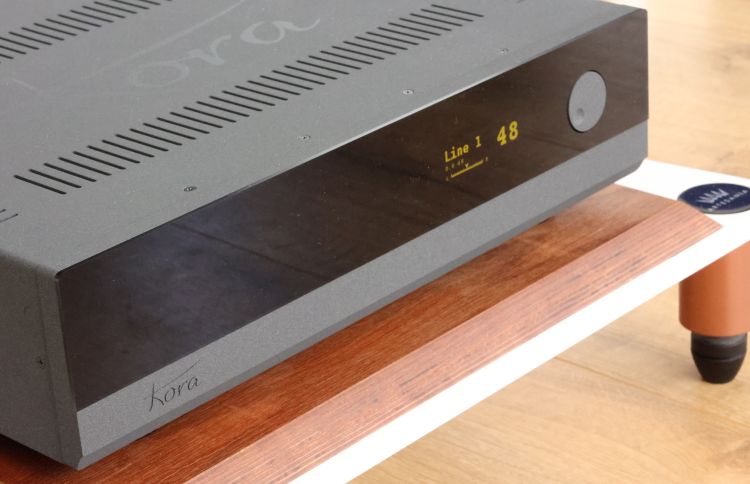
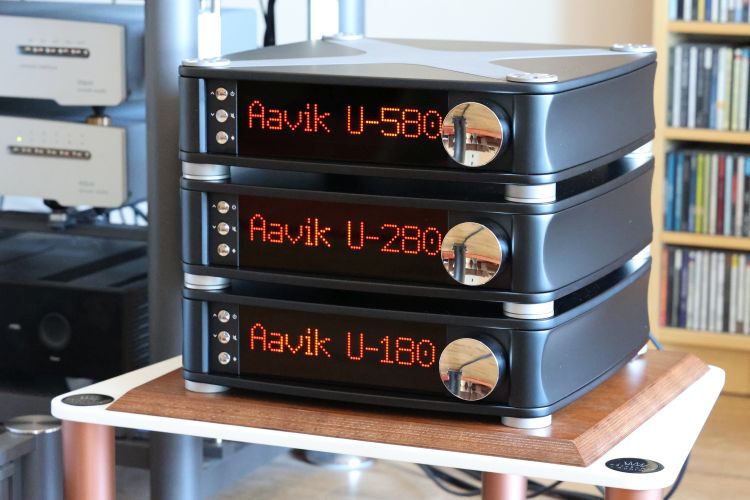
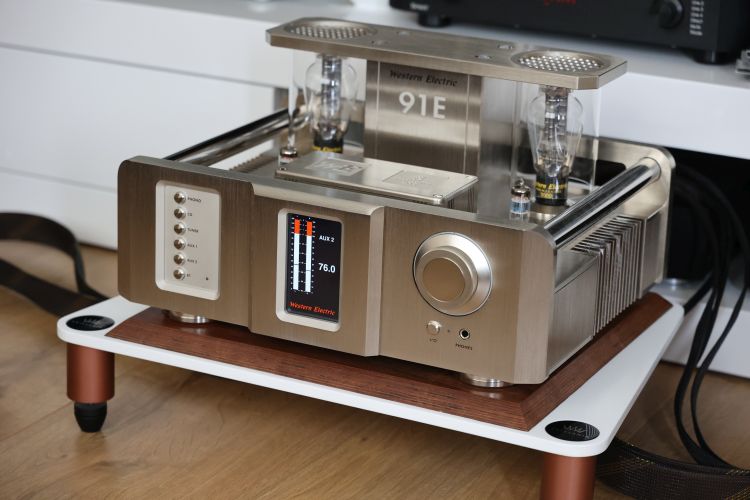
Hello Christiaan,
Good that you finally got a chance to review the Shinai. I have also had the chance to audition the Shinai in my home, but not with the dedicated stand.
I agree that this “little” 37 W amp is one of the most bass potent amplifiers I have had in my home. As you say, I think that part of it is due to the output transformers. An inductor/transformer tend to push current a little longer, it’s “slow” in turning off the current. Which result in a forceful bass delivery that is a little more than the original signal. The found the bass to be fast, detailed and well articulated but maybe a little exaggerated.
Dynamics capabilities are also good, even with by 85 dB TAD speakers. It is almost forcing the sound out of the loudspeakers regardless of if the speakers is trying to hold back. Good high resolution throughout the frequency range.
But I found the upper midrange and the lower treble to be a bit too emphasized and hard at times. Notably on instruments like; clarinet, trumpet, harmonica, electric guitar. Forceful female voices could also have a bit too much bite for my taste, in my system.
The enclosure isn’t worthy and amplifier in this price range. I don’t like the design – to me it looks more like a car heater from the 1960s. But taste is different. What isn’t based on taste is that the enclosure is not sturdy enough. The bent sheet metal resonates very easily. The transformers in the Shinai I had at home did have an audible “mechanical” hum. The amplifier didn’t have a “black background” either. The right channel was audible noisier than the left when you put your ear close to the loudspeakers.
A detail to note is that the volume control has only 31 steps. Although it was not a big problem in my system. The remote isn’t good, I found the response iffy at best.
I was at first greatly impressed by the bass, dynamics, and level of details but I think there is room for improvements, especially in the enclosure and remote. As I wrote I didn’t have the opportunity to hear the Shinai on the dedicated stands but from what I can read in your writing the stand added even more mechanical instability and distortion. Obviously you preferred what the added distortion did to the sound. Maybe like adding second harmonic distortion can result in a more pleasing sound, in this case the added pleasing distortion came from uncontrolled mechanical instability.
It could be that instable platforms could inject pleasing sound and “life” into many other amplifier design too but I don’t think this is a wise path to go down.
Hi Per, I’m with you regarding the casing and the remote, and I can imagine that the upper mid may be a little “in your face” in some combinations. Here, it wasn’t edgy but certainly lively/vivid. Normally, I don’t like “soft” coupling but with this particular stand, I have to admit that it just works well with this amplifier. I don’t hear the stand’s contribution as distortion but as taking away just the right amount of iron-fisted control that may be experienced and excessive as you also noted. What it sounds like most is a reduction in damping factor which to be fair can be interpreted as a rise in distortion, but that needn’t necessarily be the case. I think you will agree that, depending on the setup, an amplifier can also have too much control. With my sample and with these speakers, I hear no hum, mechanical or electrical, nor any noise but I did not put my ear next to the tweeters.
High End Munich 2018 I auditioned this amplifier as it made a very good impression. So good actually that I had it on loan from the that time Dutch distributor. Sound quality was confirmed.
However there are some remarks, as I, being a professional, also checked some of the technology behind the design.
1. The output stage is a pair of bipolar power transistors acting like emitter followers; this means 100% local feedback…;
2. Output transformers are actually autotransformers, which means there are no separate primary and secondary windings; this is comparable to what McIntosh does with it’s solid state power amplifiers;
3. Damping factor is not like specified; it’s been a while but when measuring the output resistance of the amplifier the damping factor was more like 50 at 8 ohm. This was audibly confirmed when listening to the amplifier through a pair of B&W 802. The 4 ohm load (and bass reflex) just made the bass a bit less well controlled.
When well paired with loudspeakers a great amplifier nonetheless!